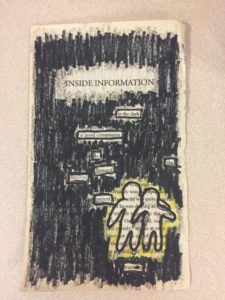Summer SAVY 2018: Session 1, Day 2 – Mighty Metamorphosis (Rising 3rd and 4th)
So, for our warmup today, I asked, how do you change a cat into a cow? One of our students said find a white cat, get some black paint, and just add spots! The answer I was going for was not nearly as creative but was connected to our topic for the day: one letter at a time. By shifting the letters, we formed new words (cot or caw) and reached our destination. The lesson: transform the parts and you transform the whole.
(Want to try some additional letter-by-letter transformations? This link has a great version of the game: http://xworder.com/MorphBuild.aspx )
From shifting letters to make new words we moved to changing words in order to alter the message or feel of a piece. Our opening here was a debate about whether it’s better to buy a pre-owned car or a used one. (Jump into the debate: which would you pick? Why?). We dug deeper into this idea by examining synonym word pairs like immature or youthful and confident or arrogant to think about positive and negative connotations – the associations that we have with a word. The students generated and discussed examples – allowing us to consider the meaning of words like dumb and mute and fight and disagreement – in preparation for skillfully putting their word choice skills into action.
Looking at an excerpt from Langston Hughes’s “Mother to Son”, we analyzed the relationship between word choice, mood, and theme. Why the word splinter? Or tack? Or crystal stair? How do these shape our understanding? From there, we set about individually transforming Hughes’s original by substituting our own words and considered how these shifts transformed message and feel.
(You can find a copy of Hughes’s poem here: http://xworder.com/MorphBuild.aspx . You might ask about how your child transformed the poem through word choice.)
With some time in the computer labs, we returned to our fairy tale transformations from yesterday. Even if all students didn’t finish, most were able to at least complete their story pitch, a summary they can use to “sell” their book idea! (You might ask to hear those pitches. Would you publish it?).
We finished the day by starting into blackout poems: how to transform an entire page of text into the few words of a poem with a wholly original meaning? Which words to keep to communicate the mood or meaning we’re going for? How to string them together? And, finally, what – if any – images to include to further shape the meaning?
Onward!
Mr. Finn
